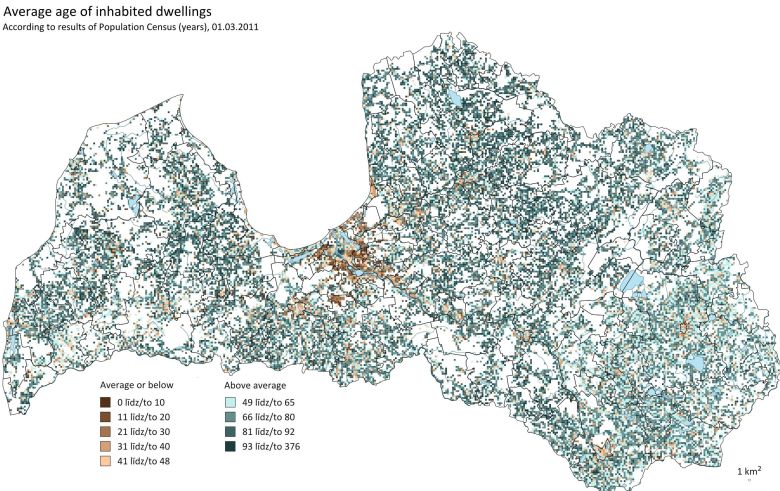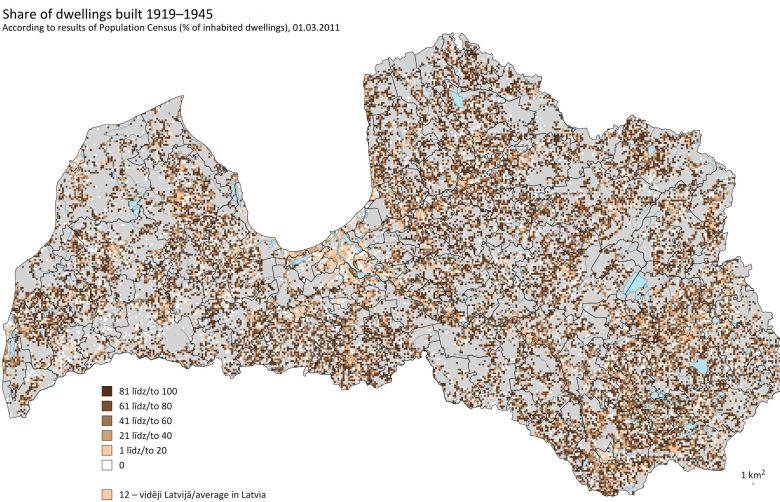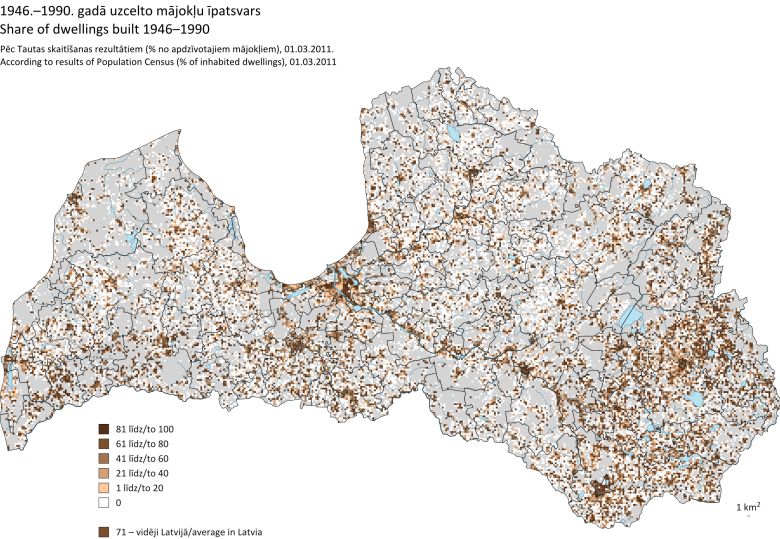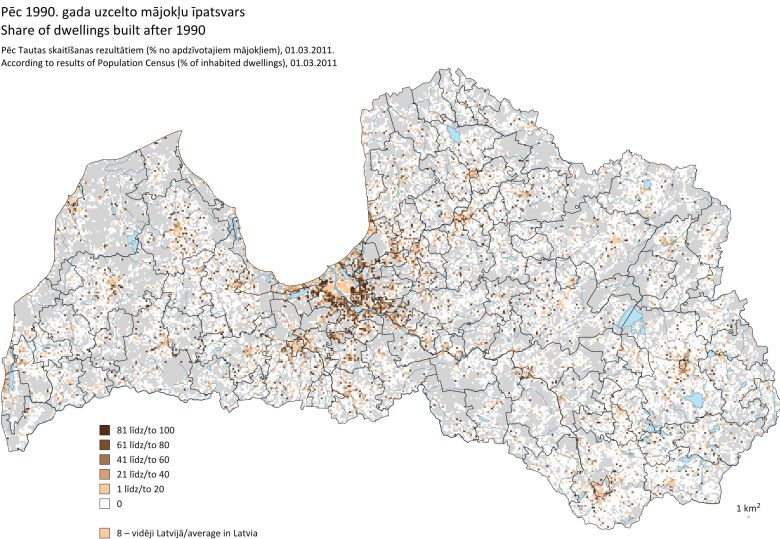Analytics, Construction, History, Latvia, Real Estate
International Internet Magazine. Baltic States news & analytics
Friday, 19.04.2024, 04:18
The oldest inhabited dwellings in Latvia – in Sabile and Cesvaine parish
 Print version
Print version
Dwellings in Riga are on average 49 years old, in Pierīga region – 42, in Kurzeme – 52, in Vidzeme – 54, but in Zemgale and Latgale – 46 years old. At the level of rural municipalities and cities, the oldest inhabited dwellings can be found in Sabile (84 years) and Cesvaine parish (82 years), while the youngest buildings are located in Baloži and Mārupe parish (23 years).

The CSB has published grid maps showing the average age of inhabited dwellings in Latvia in accordance with the Population and Housing Census 2011 results. In more densely populated areas, especially near Riga which are dominated by buildings constructed during the last 20 years, the average age of dwellings is lower. In turn older dwellings can be found in rural areas with detached houses and in the historic centre of individual cities, such as Riga or Liepāja.

Results of Population and Housing Census 2011 provide information on the age of 798 831 inhabited dwellings. 9% of inhabited dwellings have been constructed before 1919, and 12% during the time period from 1919 to 1945. Due to establishment of new holdings promoted by the agrarian reform of 1920, today the majority of the population in rural areas with detached houses live in dwellings constructed during the period of the First Republic of Latvia.
The majority (71%) of the inhabited dwellings in Latvia have been built during years 1946 to 1990. Dwellings constructed during the Soviet period are mostly located in more densely populated areas, as well as in Latgale.

8% of the residential dwellings have been built after 1990. The majority of new dwellings are located in Garkalne parish (60% of the inhabited dwellings in the area), in Tīnūži parish (59%) and in Mārupe county (52%).
The CSB animation Construction process of inhabited dwellings gives an insight into the construction processes taken place in the territory of Latvia during the time period from 1809 to 2011.

The Central Statistical Bureau (CSB) has finished the current processing stage of the data obtained in Population and Housing Census 2011 – ascription of dwelling addresses to their coordinates. As a result spatial development planning specialists, researchers, students and other data users have an opportunity to obtain spatial information on the resident population of Latvia according to the Population Census programme. Data are shown in a grid map with a grid cell size 1x1 km2. The territory of Latvia has been broken down in 65.6 thsd cells, of which 33 thsd grid cells are populated. It should be noted that the maps present data on the dwellings inhabited in 2011.
Animations, maps and grid maps for
spatial analysis of statistical information and for independent drawing of maps
are available in the CSB homepage section Data visualization.








 «The Baltic Course» Is Sold and Stays in Business!
«The Baltic Course» Is Sold and Stays in Business!

